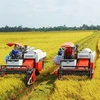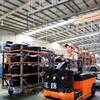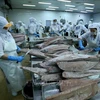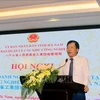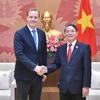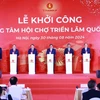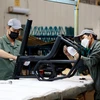Negotiations over Vietnam’s joining the Trans-Pacific Partnership (TPP) are underway. General Secretary of the Ho Chi Minh City Leather and Footwear Association Nguyen Van Khanh spoke with Vietnam Investment Review about the possible implications of the TPP on the local leather and footwear industry.
* You have worked in the industry for over 20 years, what would be the major effects of the TPP on leather and footwear businesses’ performance?
For years the local footwear industry has relied on leather imported mainly from China, Korea and India which are not TPP members. To be eligible for TPP benefits after joining the partnership, local businesses would need to import materials from other member countries or report a 40 percent localisation rate.
With this understanding, major exporters such as Thai Binh, Dong Hung, An Lac, and Vinh Thong footwear companies have been busy preparing. However, not many firms will be eligible for TPP benefits. Most notable is the zero percent duty on exporting to member countries. Few firms would benefit from this move.
Foreign investors in the footwear industry have the most to gain.
* What challenges may local firms face if Vietnam joins the TPP?
The greatest challenge is right here at home. Once Vietnam joins the TPP, import duties would fall to zero percent and local firms will find it very difficult to compete if other members such as Japan, the US, Mexico, Brazil, and New Zealand started bringing their products into Vietnam.
Foreign invested businesses may set aside part of their production for sale in the domestic market and this could cripple local leather and footwear producers.
* Can you outline the current production structure?
Vietnam is home to 500 footwear businesses with 30 percent focusing on export; though 70 percent of these simply do export-processing work for foreign partners.
* How will local firms be supported in taking advantage of TPP incentives and solving problems?
Vietnam is only in the negotiation stage and both the association and footwear companies are awaiting direct guidance from the Ministry of Industry and Trade. We are proposing that authorities and economic research institutes help lead businesses toward the right path. It could be a major problem if each individual business operates in its own way. One important factor is local firms’ brand building, as this will be essential to fully realising TPP advantages.
* What measures has the footwear sector taken recently to anticipate potential TPP membership?
For one, the Thai Footwear Association just brought in 30 businesses to network with their Vietnamese counterparts. In addition, the Thailand Research and Development Institute met with us to discuss cooperation opportunities.
Taiwanese firms, although they are engaged mostly in export processing, have also mulled expanding into Vietnam to tape the country’s growing potential. Hong Kong Leather and Footwear Association members held field visits to eight local firms and some association members are planning to fly to Hong Kong next year to visit and discuss investment and cooperation.-VNA
* You have worked in the industry for over 20 years, what would be the major effects of the TPP on leather and footwear businesses’ performance?
For years the local footwear industry has relied on leather imported mainly from China, Korea and India which are not TPP members. To be eligible for TPP benefits after joining the partnership, local businesses would need to import materials from other member countries or report a 40 percent localisation rate.
With this understanding, major exporters such as Thai Binh, Dong Hung, An Lac, and Vinh Thong footwear companies have been busy preparing. However, not many firms will be eligible for TPP benefits. Most notable is the zero percent duty on exporting to member countries. Few firms would benefit from this move.
Foreign investors in the footwear industry have the most to gain.
* What challenges may local firms face if Vietnam joins the TPP?
The greatest challenge is right here at home. Once Vietnam joins the TPP, import duties would fall to zero percent and local firms will find it very difficult to compete if other members such as Japan, the US, Mexico, Brazil, and New Zealand started bringing their products into Vietnam.
Foreign invested businesses may set aside part of their production for sale in the domestic market and this could cripple local leather and footwear producers.
* Can you outline the current production structure?
Vietnam is home to 500 footwear businesses with 30 percent focusing on export; though 70 percent of these simply do export-processing work for foreign partners.
* How will local firms be supported in taking advantage of TPP incentives and solving problems?
Vietnam is only in the negotiation stage and both the association and footwear companies are awaiting direct guidance from the Ministry of Industry and Trade. We are proposing that authorities and economic research institutes help lead businesses toward the right path. It could be a major problem if each individual business operates in its own way. One important factor is local firms’ brand building, as this will be essential to fully realising TPP advantages.
* What measures has the footwear sector taken recently to anticipate potential TPP membership?
For one, the Thai Footwear Association just brought in 30 businesses to network with their Vietnamese counterparts. In addition, the Thailand Research and Development Institute met with us to discuss cooperation opportunities.
Taiwanese firms, although they are engaged mostly in export processing, have also mulled expanding into Vietnam to tape the country’s growing potential. Hong Kong Leather and Footwear Association members held field visits to eight local firms and some association members are planning to fly to Hong Kong next year to visit and discuss investment and cooperation.-VNA



